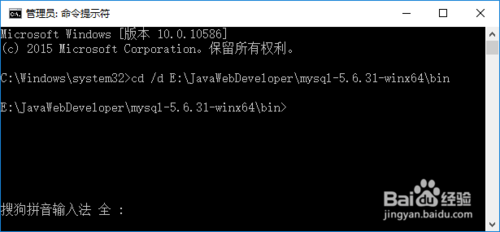文章詳情頁
DB2關聯(lián)時資料庫查詢語句基本語法(1)
瀏覽:147日期:2023-11-10 11:27:10
db2 提供了關連式資料庫的查詢語言sql(structured query language),是一種非??谡Z化、既易學又易懂的語法。此一語言幾乎是每個資料庫系統(tǒng)都必須提供的,用以表示關連式的操作,包含了資料的定義(ddl)以及資料的處理(dml)。sql原來拼成sequel,這語言的原型以"系統(tǒng) r"的名字在 ibm 圣荷西實驗室完成,經(jīng)過ibm內部及其他的許多使用性及效率測試,其結果相當令人滿足,并決定在系統(tǒng)r 的技術基礎發(fā)展出來 ibm 的產(chǎn)品。而且美國國家標準學會(ansi)及國際標準化組織(iso)在1987遵循一個幾乎是以 ibm sql 為基礎的標準關連式資料語言定義。 一、資料定義 ddl(data definition language) 資料定語言是指對資料的格式和形態(tài)下定義的語言,他是每個資料庫要建立時候時首先要面對的,舉凡資料分哪些表格關系、表格內的有什麼欄位主鍵、表格和表格之間互相參考的關系等等,都是在開始的時候所必須規(guī)劃好的。 1、建表格: create table table_name( column1 datatype [not null] [not null primary key], column2 datatype [not null], ...) 說明: datatype --是資料的格式,詳見表。 nut null --可不可以答應資料有空的(尚未有資料填入)。 primary key --是本表的主鍵。 2、更改表格 alter table table_name add column column_name datatype 說明:增加一個欄位(沒有刪除某個欄位的語法。 alter table table_name add primary key (column_name) 說明:更改表得的定義把某個欄位設為主鍵。 alter table table_name drop primary key (column_name) 12345下一頁 說明:把主鍵的定義刪除。 3、建立索引 create index index_name on table_name (column_name) 說明:對某個表格的欄位建立索引以增加查詢時的速度。 4、刪除 drop table_name drop index_name 二、的資料形態(tài) datatypes smallint 16 位元的整數(shù)。 interger 32 位元的整數(shù)。 decimal(p,s) p 精確值和 s 大小的十進位整數(shù),精確值p是指全部有幾個數(shù)(digits)大小值,s是指小數(shù) 點後有幾位數(shù)。假如沒有非凡指定,則系統(tǒng)會設為 p=5; s=0 。 float 32位元的實數(shù)。 double 64位元的實數(shù)。 char(n) n 長度的字串,n不能超過 254。 varchar(n) 長度不固定且其最大長度為 n 的字串,n不能超過 4000。 graphic(n) 和 char(n) 一樣,不過其單位是兩個字元 double-bytes, n不能超過127。這個形態(tài)是為 了支援兩個字元長度的字體,例如中文字。 vargraphic(n) 可變長度且其最大長度為 n 的雙字元字串,n不能超過 2000。 date 包含了 年份、月份、日期。 time 包含了 小時、分鐘、秒。 timestamp 包含了 年、月、日、時、分、秒、千分之一秒。 三、資料操作 dml (data manipulation language) 資料定義好之後接下來的就是資料的操作。資料的操作不外乎增加資料(insert)、查詢資料(query)、更改資料(update) 、刪除資料(delete)四種模式,以下分 別介紹他們的語法: 1、增加資料: insert into table_name (column1,column2,...) 上一頁12345下一頁 values ( value1,value2, ...) 說明: 1.若沒有指定column 系統(tǒng)則會按表格內的欄位順序填入資料。 2.欄位的資料形態(tài)和所填入的資料必須吻合。 3.table_name 也可以是景觀 view_name。 insert into table_name (column1,column2,...) select columnx,columny,... from another_table 說明:也可以經(jīng)過一個子查詢(subquery)把別的表格的資料填入。 2、查詢資料: 基本查詢 select column1,columns2,... from table_name 說明:把table_name 的特定欄位資料全部列出來 select * from table_name where column1 = xxx [and column2 > yyy] [or column3 <> zzz] 說明: 1.''''*''''表示全部的欄位都列出來。 2.where 之後是接條件式,把符合條件的資料列出來。 select column1,column2 from table_name order by column2 [desc] 說明:order by 是指定以某個欄位做排序,[desc]是指從大到小排列,若沒有指明,則是從小到大 排列 組合查詢 組合查詢是指所查詢得資料來源并不只有單一的表格,而是聯(lián)合一個以上的 表格才能夠得到結果的。 select * from table1,table2 where table1.colum1=table2.column1 說明: 1.查詢兩個表格中其中 column1 值相同的資料。 2.當然兩個表格相互比較的欄位,其資料形態(tài)必須相同。 3.一個復雜的查詢其動用到的表格可能會很多個。 整合性的查詢: select count (*) 上一頁12345下一頁 from table_name where column_name = xxx 說明: 查詢符合條件的資料共有幾筆。 select sum(column1) from table_name 說明: 1.計算出總和,所選的欄位必須是可數(shù)的數(shù)字形態(tài)。 2.除此以外還有 avg() 是計算平均、max()、min()計算最大最小值的整合性查詢。 select column1,avg(column2) from table_name group by column1 having avg(column2) > xxx 說明: 1.group by: 以column1 為一組計算 column2 的平均值必須和 avg、sum等整合性查詢的要害字 一起使用。 2.having : 必須和 group by 一起使用作為整合性的限制。 復合性的查詢 select * from table_name1 where exists ( select * from table_name2 where conditions ) 說明: 1.where 的 conditions 可以是另外一個的 query。 2.exists 在此是指存在與否。 select * from table_name1 where column1 in ( select column1 from table_name2 where conditions ) 說明: 1. in 後面接的是一個集合,表示column1 存在集合里面。 2. select 出來的資料形態(tài)必須符合 column1。 其他查詢 select * from table_name1 where column1 like ''''x%'''' 說明:like 必須和後面的''''x%'''' 相呼應表示以 x為開頭的字串。 select * from table_name1 where column1 in (''''xxx'''',''''yyy'''',..) 上一頁12345下一頁 說明:in 後面接的是一個集合,表示column1 存在集合里面。 select * from table_name1 where column1 between xx and yy 說明:between 表示 column1 的值介於 xx 和 yy 之間。 3、更改資料: update table_name set column1=''''xxx'''' where conditoins 說明: 1.更改某個欄位設定其值為''''xxx''''。 2.conditions 是所要符合的條件、若沒有 where 則整個 table 的那個欄位都會全部被更改。 4、刪除資料: delete from table_name where conditions 說明:刪除符合條件的資料。 說明:關于where條件后面假如包含有日期的比較,不同數(shù)據(jù)庫有不同的表達式。具體如下: (1)假如是access數(shù)據(jù)庫,則為:where mydate>#2000-01-01# (2)假如是oracle數(shù)據(jù)庫,則為:where mydate>cast(''''2000-01-01'''' as date) 或:where mydate>to_date(''''2000-01-01'''',''''yyyy-mm-dd'''') 在delphi中寫成: thedate=''''2000-01-01''''query1.sql.add(''''select * from abc where mydate>cast(''''+''''''''''''''''+thedate+''''''''''''''''+'''' as date)''''); 假如比較日期時間型,則為: where mydatetime>to_date(''''2000-01-01 10:00:01'''',''''yyyy-mm-dd hh24:mi:ss'''') 上一頁12345
標簽:
DB2
數(shù)據(jù)庫
排行榜

 網(wǎng)公網(wǎng)安備
網(wǎng)公網(wǎng)安備